Surface Pro 11 hands-on review: OLED beauty, Snapdragon power
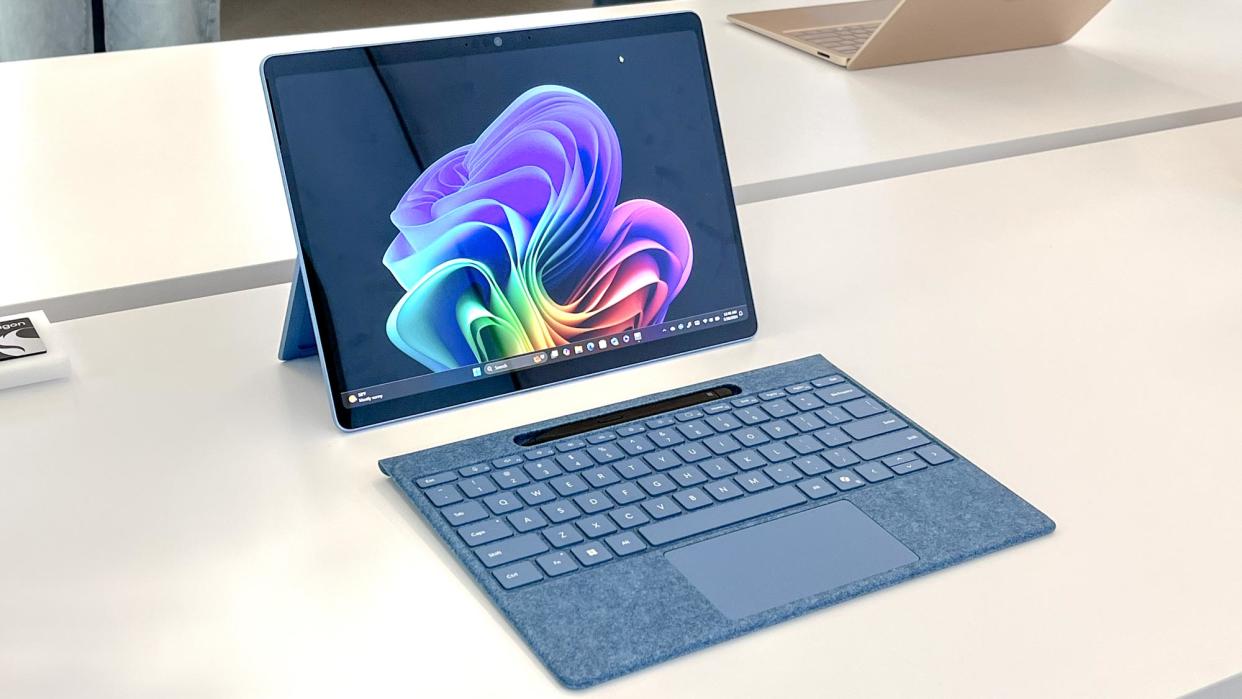
The Microsoft Surface Pro 11 ($999 to start) is the first Windows tablet Microsoft has shipped with an OLED screen, and the first to pack Qualcomm's Snapdragon X chips inside.
Those two additions make this the most exciting Surface Pro in ages, potentially offering meaningful performance improvements over older models like the Surface Pro 9 without any price increase.
The Surface Pro 11 will also be the first Surface Pro Copilot+ PC, which means it will support all of the AI features Microsoft is cramming into Windows 11 in 2024 and beyond. These features are enabled in part by the NPU built into the Snapdragon X Plus or Snapdragon X Elite chips which drive the Surface Pro 11.
These new chips are marketed as delivering long-lasting performance with support for on-device AI, and we're looking forward to putting them to the test when we do a full review. We haven't had time to do that yet, but I have gone hands-on with the Microsoft Surface Pro 11 and can tell you that this is the Microsoft's most premium-looking Surface yet.
Surface Pro 11 hands-on review: Specs
Surface Pro 11 hands-on review: Price & release date
The Surface Pro 11 is available for preorder right now from Microsoft's website at a starting price of $999, or $1,499 for the model with the new OLED display.
Technically called the Microsoft Surface Pro 11th Generation, the entry-level $999 model comes with the 13-inch (2880 x 1920 pixel) touchscreen, a Snapdragon X Plus chip, 16GB of RAM and a 256GB SSD. You can get the same model with a 512GB SSD upgrade for $1,199.
Upgrade to the $1,499 OLED Surface Pro 11 and you get the more capable Snapdragon X Elite chip, 16GB of RAM and a 512GB SSD. You can pay $1,699 for the same model with a 1TB SSD or $2,099 to order one with 32GB of RAM and the 1TB SSD.
All models are available in Platinum and Black, select models are also available in Sapphire and Dune (gold) and all start arriving June 18.
Surface Pro 11 hands-on review: Design
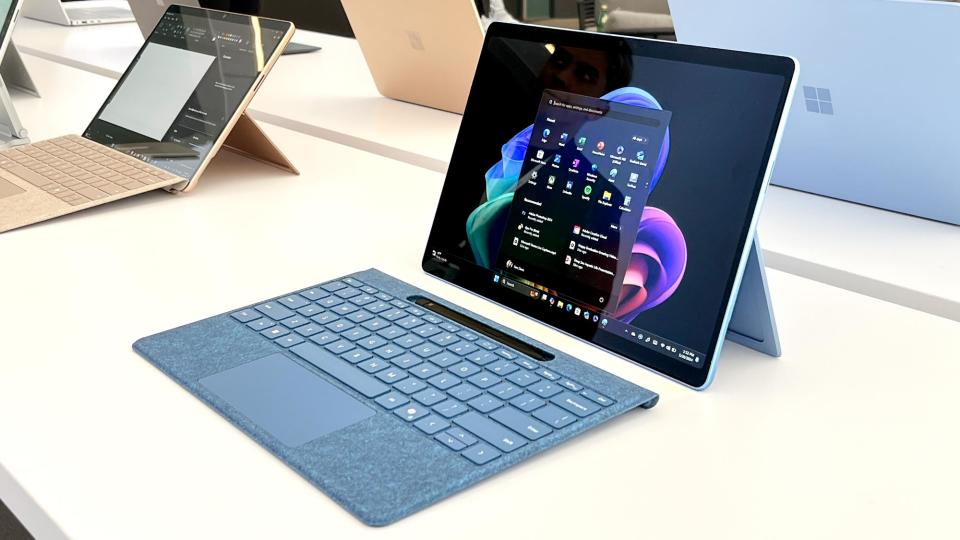
The design of the new Surface Pro 11 is essentially unchanged from its predecessors except in one eye-catching way (more on that shortly), so this is still the 2-pound Windows 11 slate you want if you don't crave the weight (or ports, or power) of a full laptop. The Surface Pro 11 still sports a pair of USB-C ports too, and on the inside it now has support for Wi-Fi 7.
But the most eye-catching aspect of the Surface Pro 11's design is undoubtedly the new OLED display, which offers contrasts and depths of color that help it stand out even in Microsoft's brightly-lit briefing rooms.
While both the LCD and OLED screens on the Pro 11 offer support for Dolby Vision HDR and include 120Hz adaptive refresh rates, the OLED upgrade boasts a 1,000,000:1 contrast ratio compared to the 1,200:1 contrast ratio of the LCD display.
I didn't have a chance to compare the two in person since Microsoft cannily only stocked our Surface Pro 11 hands-on session with OLED models, so I can't say for sure how much nicer it is over the LCD model. That comparison will have to wait until we get some machines in for testing.
Surface Pro 11 hands-on review: Display
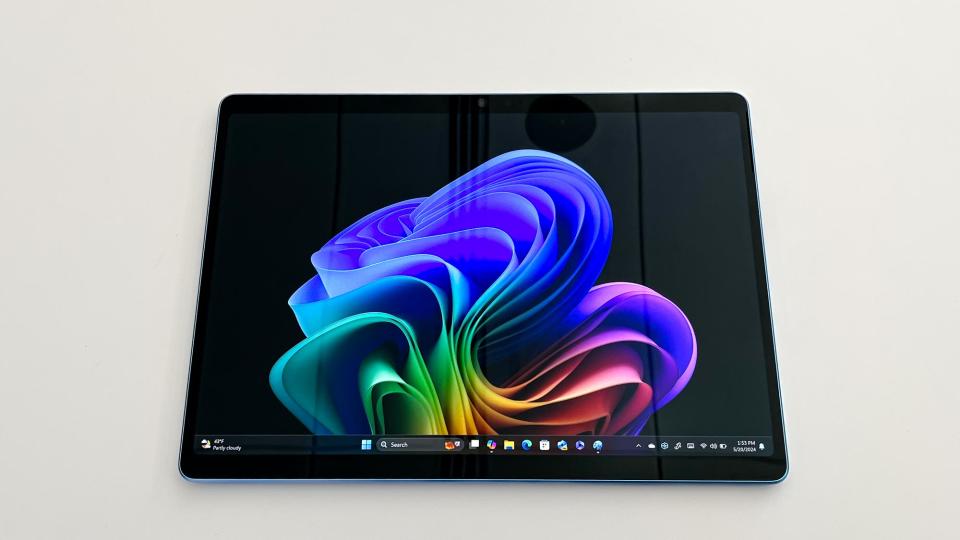
The base Surface Pro 11 comes with the same 13-inch (2880 x 1920 pixel) LCD 120Hz screen as its predecessors, and it will support Dolby Vision HDR just like those models did.
These touchscreens have always been one of the high points of the Surface Pro tablets, but the most exciting aspect of the new 11th Gen models is the addition of the OLED upgrade. While it costs a good $500 more than the entry-level Surface Pro 11, it could be worth it based on my hands-on experience.
In person, I felt like I could easily spot the Surface Pro 11 from across the room because the black background of Windows 11 had a depth of darkness that the LCD displays on Surface Laptop 7 units scattered around the room couldn't match. This is probably why Microsoft seemed to have so many Surface Pro 11 hands-on demo units set to Dark Mode with black backgrounds — it really pops on these slim 13-inch OLED screens.
Surface Pro 11 hands-on review: Performance
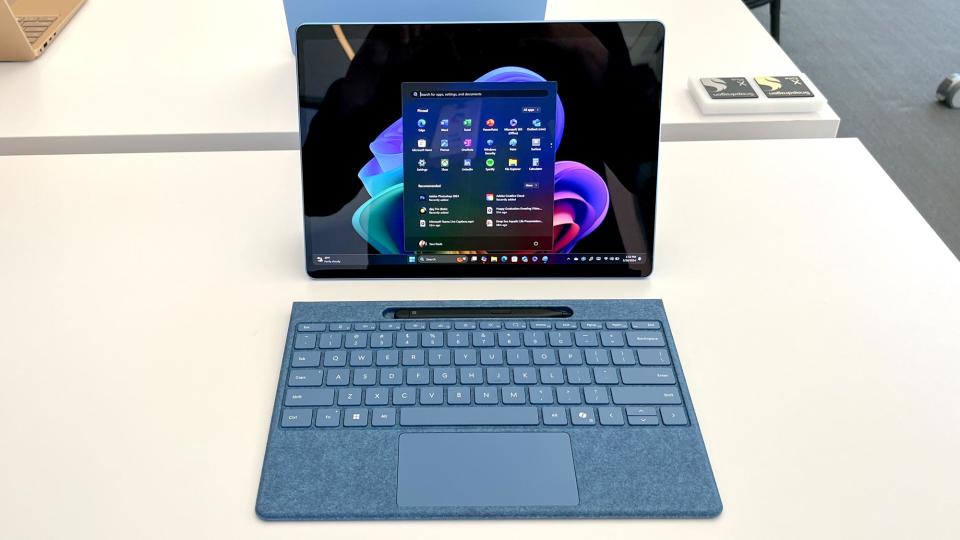
The Snapdragon X Plus and Elite chips available inside the Microsoft Surface Pro 11 are new players that could shake up the performance landscape of Windows tablets in a big way.
The promise of a premium Windows tablet like the Surface Pro is the full power and versatility of Windows with the easy portability and long-lasting power of a tablet. Previous iterations have had a hard time delivering both, but if these Snapdragon chips are as good as promised the Pro 11 could be a game-changer.
And in my brief Surface Pro 11 hands-on review time with a few of the demo units, they seem plenty fast enough for day-to-day work. I had a chance to use a few different models packing Snapdragon X Elite chips to check out demos of Copilot features or noodle around in Windows 11, and it certainly felt as fast as a modern MacBook.
Of course, we'll have to put these slates to the test in our performance benchmarks to see how well they really stack up against the competition.
Surface Pro 11 hands-on review: Outlook
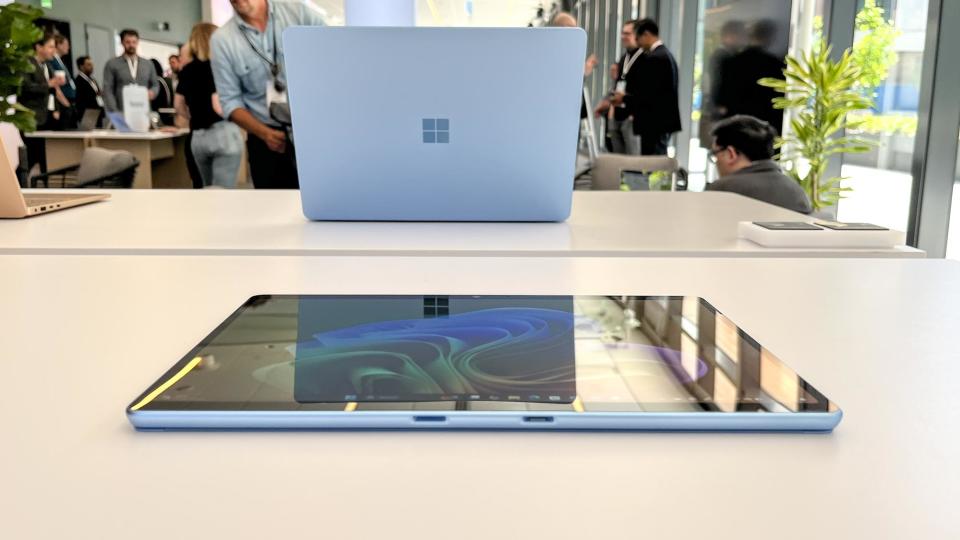
The Surface Pro line has been in dire need of a shot in the arm for some time, and Microsoft may have delivered it in the Surface Pro 11.
While the base model could deliver meaningful improvements over its predecessors for the same price if the Snapdragon X Plus chip is as good as advertised, I have to admit it's the OLED upgrade that has my attention. It's a small thing that could make this Windows 11 slate feel a lot more premium, especially if it can deliver vivid colors in tandem with killer battery life.
We're looking forward to finding out exactly how well these tablets live up to the hype in a full review, so stay tuned!

